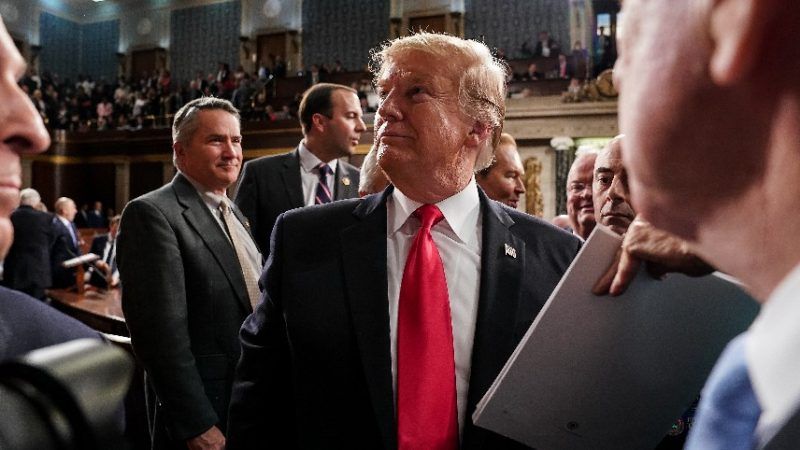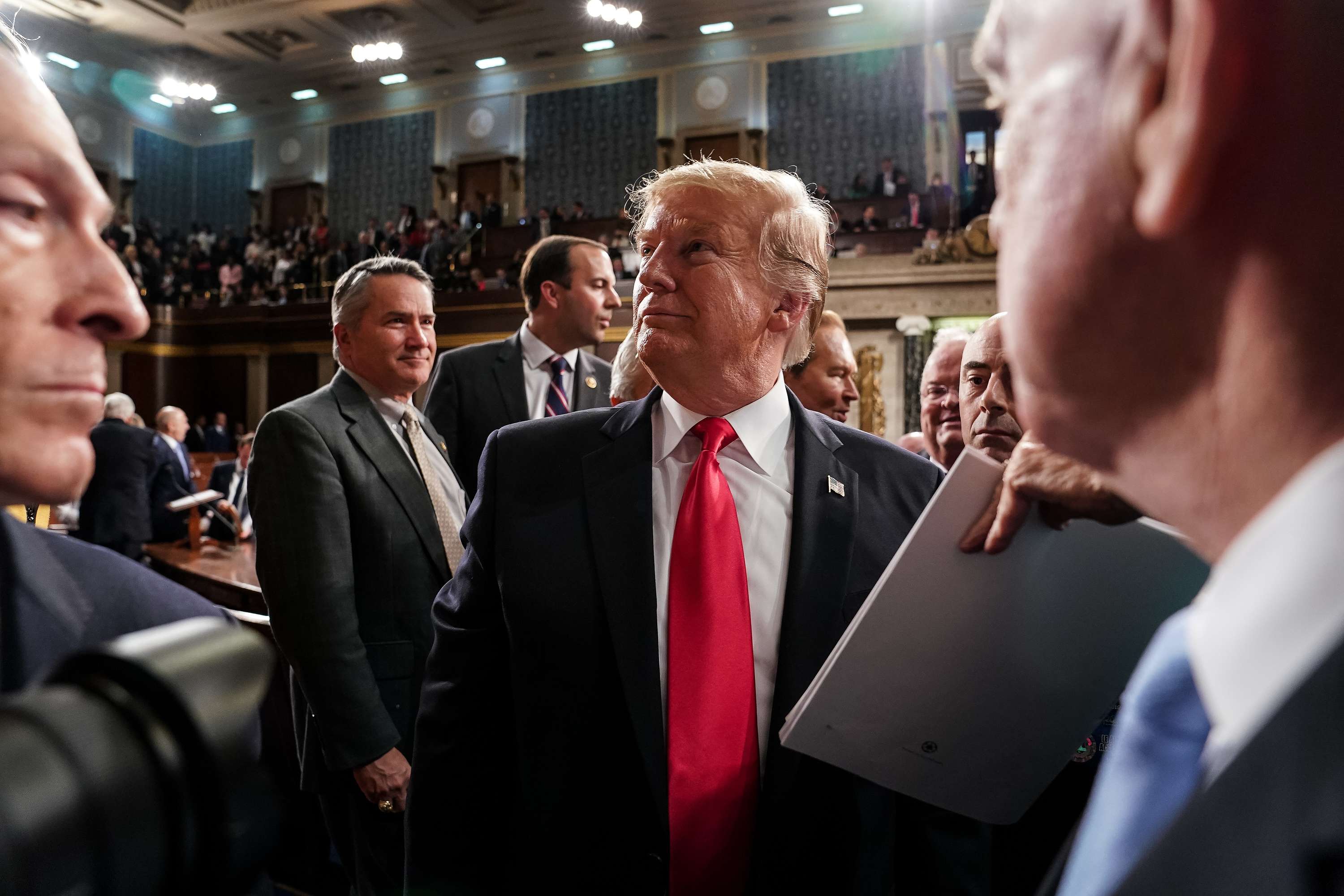Trump Said He Wants Legal Immigrants To Come 'In the Largest Numbers Ever.' Really?
He was off script, and he probably hasn't checked with his ultra-restrictionist White House aide Stephen Miller.


President Donald Trump reiterated his usual calls for crackdowns on illegal immigration and an increase in border security during the State of the Union address last night. But there was a small surprise in the immigration section of his speech: His statement that he wants immigrants to enter the country legally and in "the largest numbers ever."
That would be excellent news. More legal immigration is a far more effective cure for illegal border flows than physical barriers. Why? Because if people can come to the country legally to work, they would have no need to do so illegally, especially since working without proper authorization brings a 17 percent wage penalty.
Sadly, however, there are at least three reasons why one shouldn't get too excited about Trump's statement:
One: He was ad libbing. The official transcript of the speech circulated in advance merely said: "I want people to come into our country, but they have to come in legally." So the POTUS was off-script. Clearly, the phrase hadn't been vetted by Stephen Miller, the ultra-restrictionist White House aide who is the architect of his immigration policy.
Two: Washington Post's Robert Costa reminds us that Trump made similar declarations when he launched his presidential bid in 2015 only to back off when Miller and Steven Bannon called him out. There was a time when the Republican base made a distinction between legal and illegal immigration—favoring the first while opposing the second. Those days are gone. It is not a coincidence that during the government shutdown last January, Trump demanded a 40 percent cut in legal immigration by scrapping the diversity visa program and scaling back family-based immigration in exchange for legalizing Dreamers (folks who have grown up in this country as Americans after being brought here without authorization as minors).
Three: Trump's record to date does not indicate he is any friend of legal immigration. Indeed, he has used every regulatory and administrative tool at his disposal to reduce every single category of legal immigration.
Here is a non-comprehensive list:
- He has outlawed asylum for those fleeing gang violence. Meanwhile, he has made it difficult for Central American migrants to present themselves at official ports of entry and request asylum by engaging in a practice called metering—meaning forcing them to wait for days and weeks on the other side of the border—while making it a criminal offense if they try and seek asylum between ports of entry.
- He has nearly wiped out America's refugee program. His administration cut the refugee cap from 110,000 to 45,000 and is not even close to filling even that limit.
- He couldn't convince Congress to cut back family-based immigration. However, he has used his travel ban for that purpose. He has barred Americans from sponsoring family members from any of the five Muslim countries listed on the ban. In theory, the State Department is supposed to hand waivers from the ban to close family members—spouses and children—on a case-by-case basis. But in the first few months after the ban, it had approved a measly 430 waivers out of 6,555 eligible applicants.
- He has not even spared high-skilled immigrants who virtually everyone thinks are good for the country, including hard-to-please folks at the National Review such as Reihan Salam. He has smothered the H-1B high-skilled guest worker program in so much red tape as to make it virtually unusable. His administration is issuing more "requests for evidence" from employers sponsoring foreign workers. This means that companies have to submit even more paperwork to prove to the government that they really need the immigrant's services and couldn't find a qualified American to do the job. Worse, even as his administration is requiring employers to jump through more hoops, it is denying more H-1B requests. Nor is it allowing H-1Bs to renew their visas every three years as a matter of routine, which has been the case to date. It is forcing the visa holder and the sponsoring employer to re-file all the paperwork, as if they were applying for the first time. And, in direct contradiction to his lofty declaration in his SOTU that more women working is a good thing, he is on track to scrap work authorization for the spouses of H-1B holders, most of whom tend to be highly qualified. Given that greencard wait times for those from India and China spans decades, without this authorization, they will essentially be frozen out of the labor market permanently and become involuntary housewives, as I noted in this New York Times piece.
As I wrote in a recently in The New York Times, contrary to current mythology, America is a low-immigration nation. America's share of the foreign born ranks 34th among 50 countries with a per capita GDP of $20,000. And if it doesn't admit 2 million immigrants every year—more than twice its current rate—between now and 2050 to offset the country's plummeting birth rates and aging population, it will face a massive economic slowdown in a decade because of a shortage of workers.
If Trump is serious about allowing more legal immigration, he might want to consider a market-based system where immigrants are able to obtain visas in exchange for a fee large enough to offset any negative fiscal impact or negative externalities that they might impose. Immigrants, on balance, are a net positive for the economy as even an immigration skeptic like Harvard University's George Borjas admits. But if immigrants have to pay a fee to address the perception that they impose costs, then so be it. That's still better than simply slamming the door—both for them and the United States.
President Trump likes to win. This would be a win-win.


Show Comments (45)